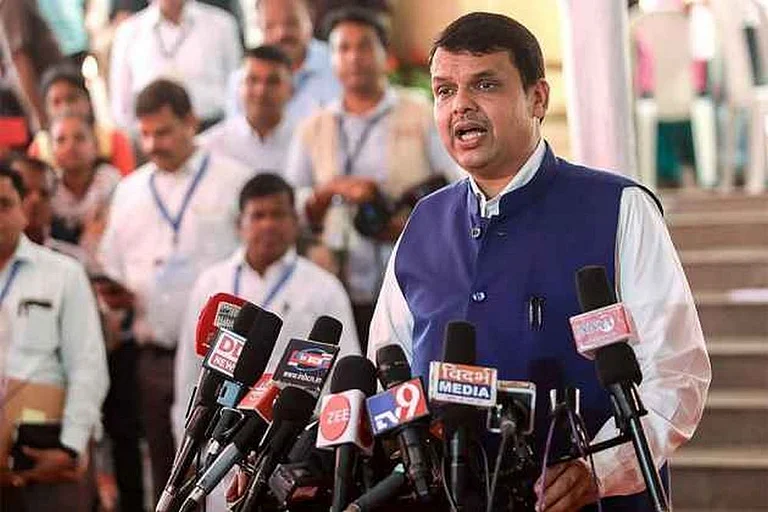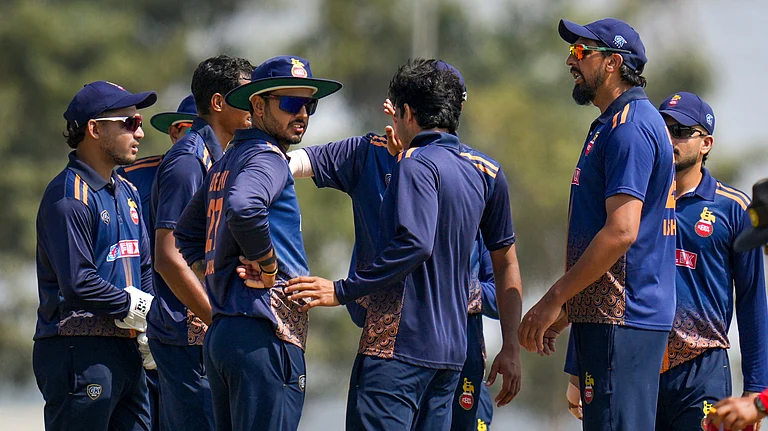In the blistering heat of Uttar Pradesh, a worried Sunita, a resident of Aishbagh, Lucknow, holds her sick child in her arms inside the bamboo house covered with plastic. The scorching heat has taken a toll on the toddler, who suffers from a high fever but Sunita refuses to seek medical aid from the nearby hospital.
“I do not trust government hospitals. I fear I might lose my child there if I take him. So I will care for him by myself,” says the despairing mother, who is unsure of the correct diagnosis her child may receive.
The relentless heatwave gripping UP has claimed multiple lives, with the Ballia district bearing the brunt of its fury. About 68 deaths were reported in five days, till Thursday, at Ballia District Hospital for different reasons but primarily they were being attributed to heatstroke. However, officials disputed the immediate correlation between deaths and heatwave and the government formed a committee to look into the deaths.
As temperatures continue to soar, the capital city of Lucknow is witnessing a surge in heatwave-related cases, further exacerbating the mounting concerns. Among the areas worst affected by the scorching heat is Faizullaganj, where such distressing incidents seem to recur every year. To investigate the situation, a committee appointed by the state government recently visited villages in the Bansdih and Garwar development blocks, which reported the highest number of fatalities, according to The Times of India. Despite compelling evidence, the government remains unwilling to acknowledge these deaths as directly caused by the heatwave.
Debate over ‘real’ cause of death
As Rajesh Kumar, a resident of Munshipulia, toiled under the scorching sun, a sudden wave of dizziness and disorientation engulfed him as he drove his auto. His body temperature soared, revealing that this was more than mere heat exhaustion. Reacting swiftly, he sought immediate medical attention.
At the hospital, doctors diagnosed Rajesh with heatstroke, characterised by severe dehydration, confining him to a bed for days. Dehydration, muscle cramps, and an unyielding headache posed formidable challenges as he fought to regain his strength. Weeks of rest and recuperation were necessary before he could resume his daily routine.
In the city’s Balram Hospital, a ward equipped with air conditioning and coolers has been set up for patients suffering from heatstroke. “This specialised ward aims to provide a conducive environment for the treatment and recovery of patients suffering from heatstroke,” states a hospital representative.
“We have encountered numerous heat stroke cases,” reveals a doctor from the hospital.
Over the past few days, several individuals, including children, have been brought unconscious to several hospitals across the city. However, some cases which were initially assumed to be heatwave-related incidents turned out to have different causes. A closer examination of many of these cases revealed that they were due to other reasons including pre-existing conditions like kidney failure.
“Individuals with pre-existing conditions like kidney failure, high blood pressure, and high blood sugar are more vulnerable to heatstroke,” emphasised a pharmaceutical specialist at Balrampur Hospital.
A similar situation at Ballia recently created a stir after many deaths were attributed to the heatwave. Last week, the Chief Medical Superintendent of Ballia District Hospital was removed for linking the high number of deaths at the hospital to the ongoing heatwave in the region. The district magistrate claimed that they have not yet got “solid evidence” linking the two.
On June 16, Dr Divakar Singh said that over 20 patients at the hospital died due to heat. Issuing a clarification, District Magistrate (Ballia) Ravindra Kumar said, “Deaths have been reported at Ballia District Hospital on social media and newspapers… I had a detailed discussion with the chief medical officer… So far, no solid evidence has been found linking the deaths to heatwave.”
Nearly 400 patients were admitted to the district hospital from June 15 to June 17, the health officials said on June 16. “As per records of the district hospital, of the 54 deaths, 40 per cent of the patients had a fever, while 60 per cent were suffering from other diseases. So far, only two persons have died due to heat stroke in the district,” Kumar told reporters on the same day.
Similarly, the Chief Medical Superintendent (CMS) of Balrampur Hospital denied any heat stroke cases within in the hospital. “No such incidents have been reported at Balrampur Hospital thus far,” he asserted. Nonetheless, he assured the public of the hospital's readiness to handle potential heatstroke cases should they arise.
How to determine heatwave cases?
Heat-related deaths, often overlooked or misclassified, demand a thorough investigation and accurate classification to comprehend the true health consequences of extreme heat, says Dr Pradeep Kumar Singh, an expert in public health and climate-related mortality.
Singh stressed the importance of comprehensive data collection and analysis in determining the impact of heatwaves on mortality. “When attributing deaths to heat, considering multiple factors and conducting thorough investigations is essential,” he explained.
One of the key challenges faced by medical professionals and public health agencies is the lack of a standardised approach to documenting heat-related deaths. Unlike more clearly defined causes like heart attacks or respiratory illnesses, the signs and symptoms of heat-related illnesses can overlap with other conditions, making accurate attribution difficult.
To differentiate heat-related deaths from other causes, medical examiners and coroners employ various strategies. Singh outlined these strategies, which include reviewing medical records, conducting autopsies, analysing weather patterns, and evaluating the circumstances surrounding the individual's death. Specific symptoms such as high body temperature, heat exhaustion, or heat stroke provide crucial evidence.
However, Singh cautioned that accurately identifying heat-related deaths can be challenging, especially when individuals have underlying health conditions. The interplay between pre-existing medical conditions and heat exposure often complicates the assessment process, necessitating a thorough evaluation of each case.
According to activist Rashmi Sinha, who has dedicated years to public health work, the rise in heatwave-related deaths can be attributed to multiple factors magnified by climate change. Escalating global temperatures, combined with the urban heat island effect and inadequate infrastructure, amplify the dangers faced by vulnerable communities. Insufficient access to cooling facilities, a lack of awareness about heatwave risks, and a sluggish government response further compound the dire situation.
How to avoid heatwave-related illness?
To prevent further loss of life during heatwaves, the activist outlines key strategies that must take precedence. Mitigating climate change through the reduction of greenhouse gas emissions and transitioning to renewable energy sources is of paramount importance. Implementing effective urban planning strategies that incorporate green spaces, increased tree cover, and improved ventilation can help mitigate the urban heat island effect.
According to Sinha, public awareness and education play a pivotal role in preventing heat wave-related fatalities. Informing individuals about the significance of staying hydrated, seeking shade during peak heat periods, and recognising the symptoms of heat-related illnesses are vital preventive measures. Equitable access to cooling centres in vulnerable communities is also imperative.
Moreover, Sinha emphasises the need for comprehensive heatwave response plans developed by governments at all levels. These plans should include early warning systems, efficient emergency medical services, and robust support networks to reach and assist the elderly, homeless, and other high-risk individuals during extreme heat events.
As the heat wave relentlessly persists in Uttar Pradesh, concerns surrounding the denial of heat stroke-related deaths continue to loom large.
“The state government's unwillingness to acknowledge the gravity of the situation raises questions about the adequacy of their response and the welfare of vulnerable communities,” observe a health expert.
Speaking to Outlook, a concerned citizen, Ashutosh Shukla, says the government must take immediate action to address this issue and provide the necessary support to those affected by the heatwave.





















